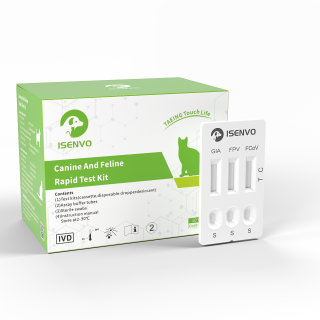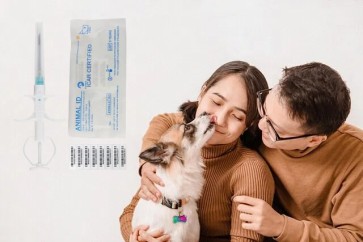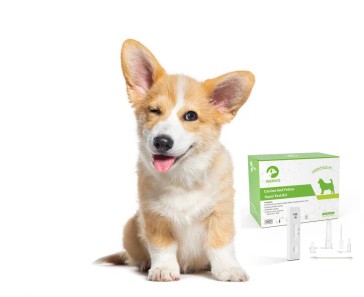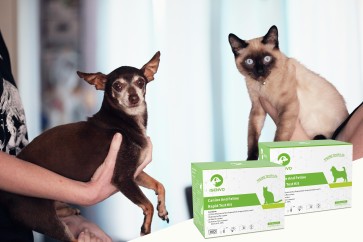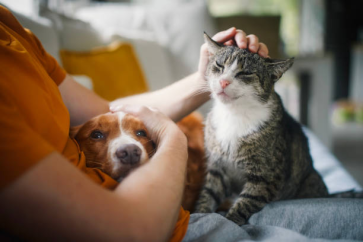Feline Panleukopenia Virus (FPV), also known as feline distemper or feline parvo, is a highly contagious and often fatal disease affecting cats, particularly kittens and unvaccinated felines. Understanding FPV prevention, proper care, and rapid testing (e.g., FPV Ag Rapid Test Kit) is crucial for cat owners, rescuers, and multi-cat households. This guide covers FPV transmission, prevention, care, and diagnostic methods.
1. Understanding FPV: Symptoms & Transmission
What is FPV?
FPV is a highly resilient DNA virus from the parvovirus family, attacking rapidly dividing cells (e.g., intestines, bone marrow). It is especially dangerous for:
-
Kittens (under 6 months)
-
Unvaccinated cats
-
Immunocompromised or stressed cats
Common Symptoms
-
Early signs:
-
Lethargy, loss of appetite
-
High fever (>104°F)
-
Vomiting, severe diarrhea (often bloody)
-
-
Advanced cases:
-
Severe dehydration
-
Neurological symptoms (tremors, seizures)
-
Sudden death (especially in kittens)
-
How Does FPV Spread?
-
Direct contact: Infected cats’ saliva, feces, vomit.
-
Indirect contact: Contaminated surfaces (bowls, bedding, human hands).
-
Environmentally persistent: Survives months to years on surfaces.
2. Preventing FPV Infection
1. Vaccination (Best Protection)
-
Vaccine type: Core vaccine (FVRCP includes FPV protection).
-
Schedule:
-
Kittens: First dose at 6-8 weeks, boosters every 3-4 weeks until 16 weeks.
-
Adults: Booster every 1-3 years (as advised by a vet).
-
2. Strict Hygiene & Disinfection
-
Effective disinfectants:
-
Bleach (1:32 dilution)
-
Potassium peroxymonosulfate (e.g., Virkon)
-
-
Key areas to clean:
-
Litter boxes, food bowls, bedding, floors.
-
3. Quarantine New/Sick Cats
-
New cats: Isolate for 1-2 weeks before introduction.
-
Sick cats: Separate immediately with dedicated supplies.
4. Boosting Immunity
-
High-quality diet: Protein-rich, easily digestible food.
-
Stress reduction: Quiet spaces, minimal changes in routine.
3. Optimal Cat Care to Minimize FPV Risks
1. Dietary Support for Recovery
-
Hydration: Offer electrolyte solutions (e.g., unflavored Pedialyte).
-
Easy-to-digest food: Boiled chicken, vet-recommended recovery diets.
2. Regular Health Checks
-
Kittens & unvaccinated cats: Frequent vet visits.
-
Parasite control: Deworming & flea prevention.
3. Safe & Sanitary Environment
-
Litter boxes: Clean daily, avoid overcrowding.
-
Disinfect surfaces: Especially in multi-cat homes.
4. FPV Ag Rapid Test Kit: Fast Detection
What is an FPV Ag Test?
A lateral flow immunochromatographic test that detects FPV antigens in feces (results in 5-10 minutes).
When to Use It?
-
Symptomatic cats (vomiting, diarrhea, lethargy).
-
New/rescued cats (screening before introduction).
-
Multi-cat environments (shelters, catteries).
How to Use?
-
Collect sample: Fresh feces (avoid litter contamination).
-
Mix with buffer: Insert swab into solution.
-
Test: Add drops to the kit.
-
Read results:
-
C+T lines: Positive (FPV detected).
-
C line only: Negative.
-
No lines/only T: Invalid (retest).
-
Limitations
-
False negatives: Early infection may not show.
-
Confirm with vet: PCR testing for accuracy.
5. Key Takeaways
✔ Prevent FPV: Vaccinate, disinfect, quarantine new cats.
✔ Better care: Hydration, high-quality diet, low-stress environment.
✔ Early detection: Rapid tests help, but vet confirmation is essential.
If your cat shows FPV symptoms, seek veterinary care immediately—early treatment saves lives!
Has your cat been tested for FPV? Share your experience in the comments!





